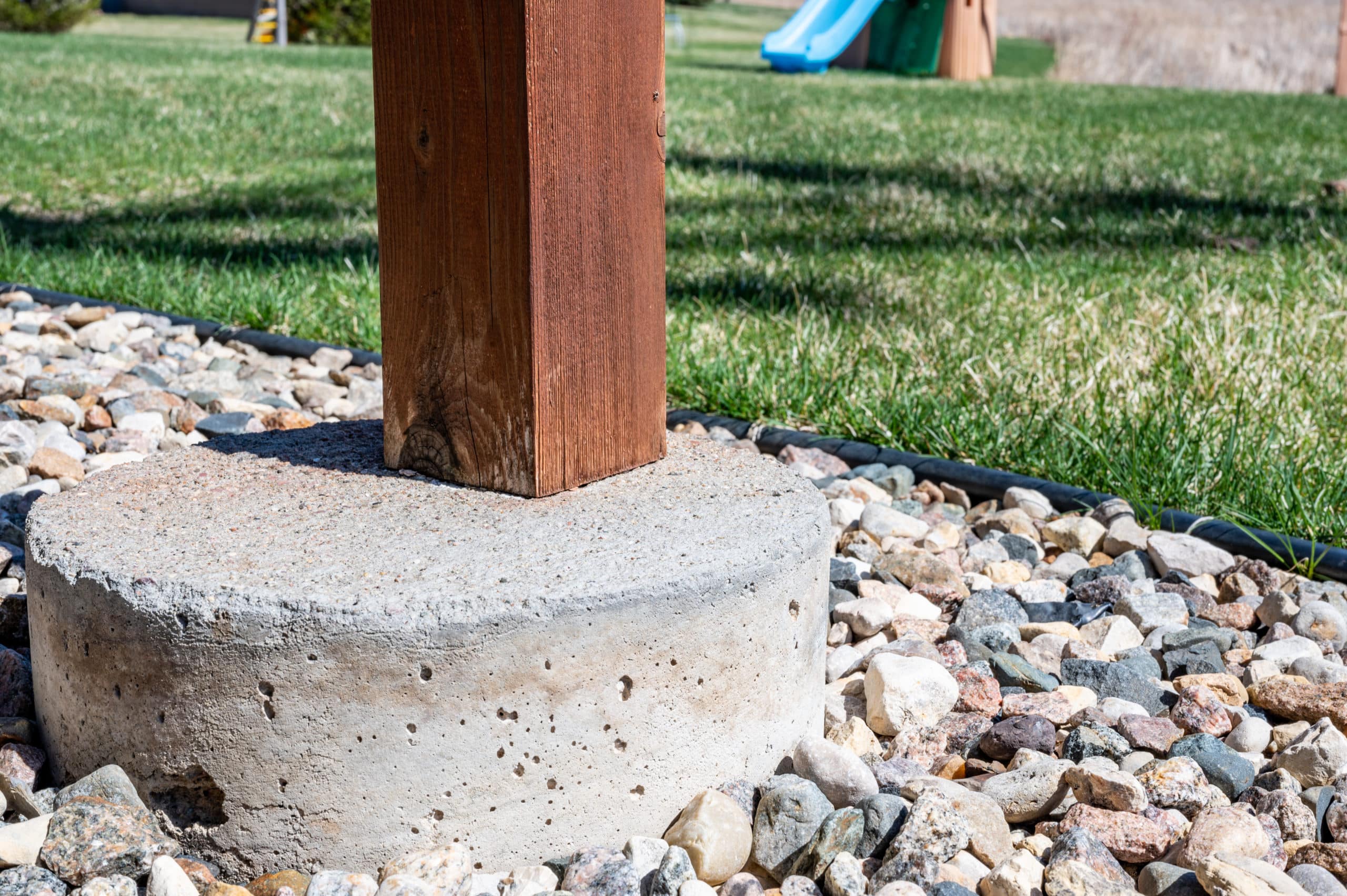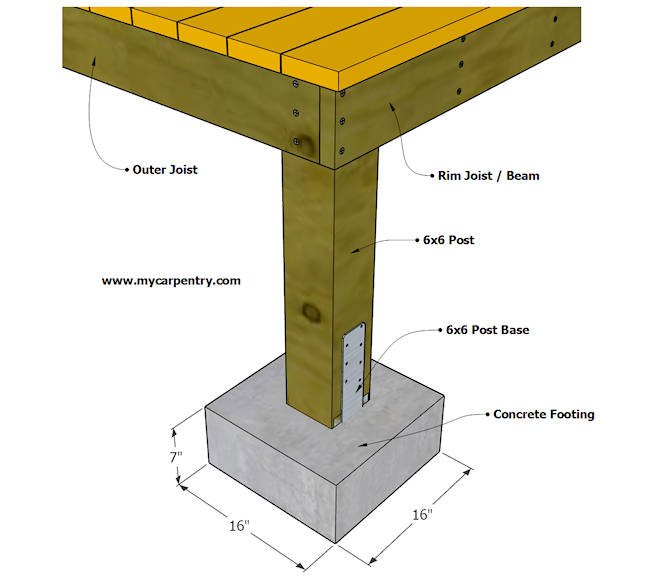Structure from the Ground Up: The Ultimate Guide to Designing and Installing Deck Footings
Structure from the Ground Up: The Ultimate Guide to Designing and Installing Deck Footings
Blog Article
Picking the Right Deck Footings for Stability and Resilience
When it concerns building a deck, one of the most important decisions you will certainly make is choosing the best footings for stability and durability. The longevity and safety and security of your deck depend greatly on the sort of grounds you pick, as they offer the essential assistance and security to hold up against the examination of time. With a myriad of choices available, it can be overwhelming to determine which grounds are best suited for your particular demands. In this conversation, we will check out the various kinds of deck footings, think about the vital factors to evaluate when deciding, and dig right into the pros and cons of different options. By the end, you will certainly have a clearer understanding of the choices available and be better equipped to make a notified choice for your deck task.
Kinds Of Deck Footings
There are numerous types of deck footings that can be used, each offering one-of-a-kind advantages and considerations. One typical sort of footing is the concrete pier ground. These footings consist of a cylindrical hole loaded with concrete, which provides a strong structure for the deck messages. Concrete pier footings are reasonably simple to set up and provide outstanding security, making them a popular choice for several deck jobs.
An additional kind of footing is the helical stack footing. Helical piles are steel shafts with helical plates affixed to them. These grounds are set up by screwing them into the ground, which develops a safe and secure foundation for the deck. Helical pile grounds are ideal for locations with difficult soil conditions, as they can be set up in practically any type of kind of dirt. They also enable for easy change and leveling of the deck if needed.
Conversely, some builders select precast concrete grounds. These grounds are constructed from long lasting concrete and come in different shapes and sizes to fit various deck layouts. Precast concrete footings are practical to set up and supply a stable base for the deck framework.
Lastly, one more alternative is the post-in-anchor footing system. This kind of ground entails driving a steel anchor right into the ground and connecting it to the deck blog post. It supplies flexibility in regards to placing the deck messages and appropriates for decks with lightweight frameworks.
When selecting the appropriate kind of deck ground, it is vital to think about variables such as dirt conditions, deck lots, and regional building codes (Deck Footings). Consulting with an expert specialist or structural designer can aid guarantee the proper footing is picked for a secure and safe deck
Variables to Take Into Consideration When Picking Grounds
When selecting the appropriate grounds for a deck, it is vital to thoroughly consider different elements such as soil conditions, deck load, and adherence to local building codes. These elements play a considerable role in making sure the security and longevity of the deck structure.
One of the main factors to consider is the soil conditions. The sort of dirt on which the deck will be constructed establishes the type of footings needed. For example, decks improved loose or sandy dirts might call for deeper grounds to give appropriate assistance and stop settling. On the various other hand, decks constructed on clay or extensive soils might need grounds that can accommodate the dirt's tendency to increase and agreement.
One more important factor is the deck tons. The weight of the deck, including the materials made use of and any type of potential real-time tons such as furnishings or celebrations, need to be thought about when choosing footings. The footings need to be designed to bear the weight of the deck and disperse it equally to stop any kind of architectural concerns or failures.
Last but not least, adherence to regional building regulations is extremely important. Building regulations vary from region to area, and it is vital to comply with the certain needs set by the local authorities. Deck Footings. These codes make sure that the deck is built securely and satisfies the required requirements for architectural honesty and load-bearing capability
Concrete Footings: Cons and pros

Concrete footings use numerous advantages and drawbacks when utilized as the structure for a deck. On the positive side, concrete grounds supply outstanding security and toughness.
One more find this benefit of concrete grounds is their versatility. They can be put right into different forms and dimensions to suit numerous deck designs and configurations. Concrete footings can be customized to fit the certain requirements and needs of the deck framework.
Nevertheless, there are additionally some drawbacks to making use of concrete footings. This can enhance the total cost of the deck task and might require professional help.

Helical Piers Vs. Sonotubes: Which Is Better?
In thinking about the structure alternatives for a deck, the comparison in between helical piers and sonotubes is important in determining the premium option. Helical piers, additionally called screw piles, are steel shafts with helical plates affixed to them. They are twisted into the ground utilizing hydraulic machinery, giving a sturdy and stable structure for the deck. On the other hand, sonotubes are round kinds constructed from cardboard or fiber material that are full of concrete. They are placed in a hole dug into the ground and give support for the deck.
The helical plates on the piers create a solid grasp with the dirt, shifting or preventing any type of motion of the deck. Sonotubes, on the various other hand, count entirely on the concrete filling for security, which might not use the same degree of strength and resistance.
In regards to setup, helical piers are reasonably less complicated and faster to mount contrasted to sonotubes. The hydraulic machinery made use of to turn the piers into the ground guarantees a fast and reliable process. Sonotubes, on the other hand, need digging holes and pouring concrete, which can be labor-intensive and lengthy.
Furthermore, helical piers are an even more versatile alternative. They can be utilized in different soil problems and can be changed or enhanced if required. Sonotubes, on the various other hand, might call for extra assistance, such as rebar, in specific soil conditions or areas with high load needs.
Choosing the Right Footings for Your Deck's Dimensions
For optimum structural stability, it is vital to very carefully select the ideal grounds that align with the measurements of your deck. The measurements of your deck, including its height, width, and length, play a significant duty in establishing the kind and dimension of grounds called for.
When picking grounds for your deck, it is very important to think about the load-bearing capability of the soil. The weight of the deck, integrated with the weight of any type of furniture or individuals on it, puts in a substantial pressure on the grounds (Deck Footings). For that reason, it is crucial to choose footings that can effectively sustain this weight without changing or sinking with time.
The shapes and size of the footings should also be thought about. Larger decks with greater measurements call for larger grounds to provide sufficient security and assistance. The shape of the grounds, whether they are rounded or square, depends on the layout and click resources design of the deck. Additionally, the deepness at which the grounds are installed ought to be identified based on the frost line in your region to avoid any type of heaving or moving because of freezing temperatures.
Conclusion
In conclusion, picking the ideal deck grounds is critical for making certain stability and sturdiness. Variables such as look here the kind of grounds, the deck's measurements, and the pros and disadvantages of different options ought to be considered.
These footings are composed of a cylindrical hole loaded with concrete, which provides a strong foundation for the deck posts. Concrete pier grounds are fairly very easy to install and provide exceptional stability, making them a prominent option for lots of deck jobs.
Precast concrete grounds are practical to set up and offer a stable base for the deck structure.
It uses flexibility in terms of placing the deck articles and is suitable for decks with lightweight structures.
Concrete grounds offer numerous advantages and negative aspects when utilized as the foundation for a deck.
Report this page